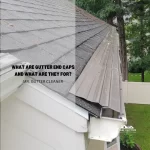Mold in the home poses significant risks, not only to the structure of your house but also to the health of its inhabitants. Understanding and preventing mold growth is a crucial aspect of home maintenance.
Mold thrives in moist environments, so controlling humidity levels and ensuring proper ventilation are fundamental steps in mold prevention.
Regular inspections can identify potential sources of moisture, such as leaks or condensation, which, if left unaddressed, can become breeding grounds for mold.
Implementing daily habits to reduce moisture, like using exhaust fans in bathrooms and kitchens, can significantly mitigate mold risks.
Additionally, cleaning and drying any wet areas immediately will help prevent mold spores from taking hold.
Homeowners should also be aware of the legal and insurance aspects related to mold, ensuring they are adequately covered and understand their responsibilities in mold prevention and remediation.
This introduction sets the stage for a deeper exploration of strategies and practices to maintain a mold-free home, aligning with the goal of providing homeowners with the information they need to protect their homes and health from mold.
What Causes Mold in Houses?
Mold in houses primarily stems from moisture accumulation, which creates an ideal environment for its growth. Understanding the causes is the first step in prevention.
How Does Mold Grow?
Mold growth initiates when mold spores, which are present almost everywhere, land on wet surfaces. These spores need moisture to start growing and proliferate on various surfaces when conditions are favorable. This highlights the importance of controlling indoor moisture levels.
Common Sources of Moisture in Homes
Key sources of indoor moisture include leaks in roofs, walls, or pipes; condensation on cold surfaces; and high humidity from daily activities like cooking and bathing. Poor ventilation exacerbates moisture issues by trapping damp air indoors. Addressing these sources is critical in preventing mold growth.
How Do You Know You Have Mold?
Detecting mold in your house is crucial for maintaining a healthy living environment. This section guides homeowners through identifying mold presence through visible signs and health symptoms, ensuring timely intervention and prevention strategies.
Visible Indicators of Mold
Mold can often be identified by distinct signs within the home environment. Look for patchy areas of black, green, or white growth on walls, ceilings, or hidden surfaces. Musty odors are also a common indicator, signaling mold presence even if it’s not visibly apparent. Peeling wallpaper, water stains, and discoloration of surfaces can further hint at underlying mold issues.
Health Symptoms Related to Mold Exposure
Health symptoms from mold exposure can vary widely among individuals, but common signs include persistent coughing, sneezing, sore throats, runny noses, and eye irritation. More severe reactions, such as asthma attacks or allergic responses, can occur, especially in those with existing respiratory conditions or sensitivities. Recognizing these symptoms early can prompt homeowners to investigate and address potential mold growth promptly.
Health Risks Associated with Mold
Understanding the health risks associated with mold is crucial for homeowners. Mold exposure can lead to a variety of health issues, ranging from minor irritations to more severe respiratory conditions. This section aims to inform homeowners of the potential health risks, emphasizing the importance of maintaining a mold-free environment.
Short-term Health Effects of Mold
Short-term exposure to mold can cause symptoms such as sneezing, coughing, throat irritation, nasal congestion, and eye irritation.
Individuals with asthma or allergies may experience heightened reactions.
Immediate steps to mitigate mold exposure and its health impacts are essential for maintaining indoor air quality and occupant health.
Long-term Health Effects of Mold
Long-term exposure to mold can lead to more severe health conditions, including respiratory infections, asthma development in previously non-asthmatic individuals, and allergic reactions.
It is critical for homeowners to address mold issues promptly to prevent long-term health effects and ensure a healthy living environment.
Preventive Measures to Control Moisture
To safeguard your home against mold, controlling indoor moisture is crucial. This section provides actionable strategies for homeowners, focusing on ventilation, humidity regulation, and waterproofing techniques.
Proper Ventilation Techniques
Ventilation plays a key role in preventing mold by removing excess moisture from your home. Utilize exhaust fans in high-moisture areas like bathrooms and kitchens, and ensure that your home’s ventilation systems, such as HVAC units, are regularly maintained and properly sized for your living space.
Optimal Humidity Levels for Homes
Maintaining indoor humidity levels between 30-50% significantly reduces the risk of mold growth. Use hygrometers to monitor humidity levels, and employ dehumidifiers in damp areas to maintain these optimal conditions.
Importance of Waterproofing
Waterproofing basements, crawl spaces, and other areas prone to moisture ingress can prevent water accumulation that leads to mold. Strategies include sealing cracks in foundations, installing sump pumps, and using waterproofing membranes to protect against water damage.
Mold Prevention Strategies
Adopting strategic measures can significantly reduce the risk of mold in your home. This section outlines effective strategies encompassing daily habits, cleaning practices, and the judicious use of technology to keep mold at bay.
Daily Habits to Reduce Moisture
Incorporate moisture-reducing habits into your daily routine to prevent mold growth. This includes opening windows to improve air circulation, using exhaust fans in bathrooms and kitchens, and drying wet areas immediately. Regularly checking for leaks and addressing them promptly can also prevent moisture accumulation.
Effective Cleaning Solutions for Mold Prevention
Regular cleaning with mold-inhibiting solutions can keep spores from settling and proliferating. Solutions containing vinegar, hydrogen peroxide, or baking soda are effective for regular use and can prevent mold growth on surfaces. For areas prone to dampness, such as bathrooms, use antimicrobial sprays after cleaning to add an extra layer of protection.
When to Use Dehumidifiers
Dehumidifiers are essential in areas with high humidity levels, as they help maintain an environment that is inhospitable to mold. Use dehumidifiers in basements, laundry rooms, and other areas where moisture is prevalent. Maintaining humidity levels between 30-50% is key to preventing mold growth.
How to Identify and Eliminate Mold Sources
Identifying and eliminating sources of mold are critical steps in maintaining a mold-free home. This section provides homeowners with practical advice on finding mold, addressing common sources, and when it’s necessary to seek professional help.
Inspecting for Mold in Critical Areas
Regular inspections in areas prone to moisture, such as basements, bathrooms, and under sinks, can help identify mold early.
Look for visible signs of mold growth or musty smells, which often indicate hidden mold. Use a flashlight to inspect dark corners and behind furniture for any signs of mold.
DIY Mold Removal Tips
For small areas of mold, a DIY approach can be effective. Cleaning solutions made from household items like vinegar or baking soda can kill mold on hard surfaces.
It’s essential to wear protective gear, such as gloves and masks, to avoid exposure to mold spores during removal.
When to Call a Professional for Mold Removal
Large infestations or mold in hard-to-reach places may require professional remediation. If the affected area is larger than 10 square feet, or if you suspect mold in your HVAC system, it’s time to call in experts. Professionals have the tools and knowledge to safely and effectively remove mold and prevent future growth.
Maintaining a Mold-Free Home
Maintaining a mold-free home requires consistent effort and vigilance. This section provides homeowners with a blueprint for regular maintenance and monitoring practices to prevent mold growth and ensure a healthy living environment.
Regular Home Maintenance Checklist
A comprehensive home maintenance checklist is essential for preventing mold. This includes regular inspections for leaks, ensuring gutters and downspouts are clean and directing water away from the foundation, and promptly repairing any damaged roofing or plumbing. Seasonal checks on ventilation systems and air filters also play a crucial role in maintaining air quality and moisture levels within the home.
Monitoring Humidity and Ventilation
Keeping humidity levels in check is crucial for mold prevention. Utilize hygrometers to monitor indoor humidity, aiming to keep it between 30-50%. Ensure adequate ventilation throughout the home, especially in high-moisture areas like bathrooms and kitchens. Employing dehumidifiers in damp spaces and ensuring your HVAC system is correctly sized and functioning can further aid in controlling indoor moisture levels.
Legal Considerations and Insurance
Navigating the complexities of legal considerations and insurance related to mold in the home is crucial for homeowners and tenants. This section outlines key aspects of insurance coverage and landlord responsibilities, providing essential knowledge to effectively manage mold issues.
Homeowner’s Insurance and Mold Coverage
Homeowner’s insurance policies vary widely in terms of mold damage coverage. Typically, policies cover mold damage only if it’s a result of a “covered peril,” such as water damage from a burst pipe. However, most policies exclude mold that results from chronic humidity, leaks, or flooding. It’s vital for homeowners to review their insurance documents carefully, understand the extent of their coverage, and consider additional mold insurance if necessary. In instances of mold claims, documenting the damage and the source of moisture is essential for the claims process.
Landlord Responsibilities Regarding Mold
Landlords are generally responsible for providing a habitable living environment, which includes addressing mold issues that can affect tenants’ health. The specific legal obligations can vary by location, but generally, landlords must act promptly to remediate mold problems when reported. This includes professional mold assessment and remediation, repairing the source of moisture, and sometimes, providing alternative accommodations for tenants during the remediation process. Tenants facing unaddressed mold issues may have legal recourse, depending on local laws and regulations.


